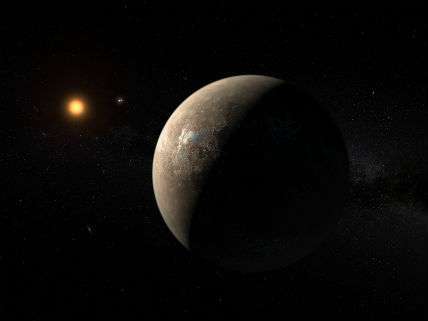Rocky Earth-Sized Planet Found Circling Nearest Star
The privately funded Breakthrough Starshot program now has an excellent target for its StarChips

Astronomers from the University of Texas at Austin have just announced that they have discovered evidence that a rocky planet slightly larger than the Earth is orbiting Proxima Centauri, the closest star to Sol. The planet orbits its star in 11 days, but because Proxima Centauri is a cool red dwarf star, its surface temperature is low enough to be suitable for liquid water and thus lies within the conventionally defined habitable zone around the star. The new exo-planet is named Proxima b.
If this result stands, the new private Breakthough Starshot program will have an excellent target at which to aim. As reported earlier:
A fleet of laser-boosted nanocraft could be on their way to the Sun's nearest neighboring star, Alpha Centauri in a couple of decades. Breakthrough Starshot is the ambitious proposal announced by Russian internet entrepreneur Yuri Milner in New York [in April]. As outlined by Milner, the idea is that a fleet of gram-sized spacecraft - StarChips - kitted out with diaphanous lightsails will be boosted into orbit and then blasted with a ground-based "light beamer" consisting of phased 100 gigawatt array of lasers. Traveling at 20 percent of the speed of light, a fleet of StarChips would make the trip in only 20 years.
Of course, if warp drives were available (and consistently described), it would take perhaps 3 days to get there at Warp Factor 3.



Show Comments (118)